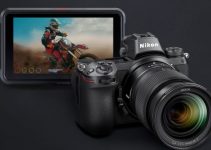The Sony A7S III is packed with a host of new features and technological advancements. In addition to its new AF modes, improved stabilization, and the inclusion of 10-bit 4:2:2 internal recording, it also offers a lot of different frame rates, fast recording options, and two completely new codecs.
With the release of any new camera there is often a lot of confusion and misinformation about its capabilities, and since not that many people have gotten there hands on the amazing new Sony A7S III yet, Carl Yates from ProAV has taken the time to sit down and clear things up.
You’ll need to purchase new CFast Express Type A media to take advantage of all that the A7S III has to offer, so understanding the speed requirements that are needed is crucial.
Forget about the new sensor, external raw capabilities, and body design improvements, this is all about data rates. It might not be exciting stuff, but it is definitely important to understand the bandwidth and storage requirements if you’re intended to purchase this amazing new camera.
The A7SIII has 3 internal codec options that are available for almost every shooting mode (excluding high frame rate), frame rates from 23.976 to 119.88 in 4K, and up to 240 fps in HD! It can film in 10-bit 4:2:2, 10-bit 4:2:0, and 8-bit 4:2:0. My head is already spinning with numbers and we haven’t even started talking about data rates.
As a side note, I often find people get rather confused about the difference between megabytes (MB) and megabits (Mb/s). Megabytes are used when referring to the size of a file or storage capacity. Megabits are used to describe bandwidth (an internet connection, data transfer speeds, etc). Eight megabit equal one megabytes; so you divide the data rate by 8 to determine how much storage space you need.
Sony A7SIII Codec Options:
- XAVC S
- Compression: H.264
- 8-bit 4:2:0
- UHD 4K @ 60-200 Mb/sHD @ 16-100 Mb/s
- 10-bit 4:2:2
- UHD 4K @ 100-280 Mb/s
- HD @ 50 Mb/s
- XAVC S-I
- Compression: H.264
- 10-bit 4:2:2
- UHD 4K @ 240-600 Mb/s
- HD @ 89-222 Mb/s
- XAVC HS
- Compression: H.265
- 10-bit 4:2:0
- UHD 4K @ 30-200 Mb/s
- 10-bit 4:2:2
- UHD 4K @ 50-280 Mb/s
The maximum frame rate of the Sony A7sIII is available in all codecs except for XAVC S-I, which is limited to 60p in both HD and 4K.
XAVC S is the standard codec we’ve seen in Sony mirrorless cameras going back to the original A7S. It uses H.264 compression and offers lean data rates and plays well on a computer, however, it is a Long GOP codec and therefore is more difficult to edit without transcoding since color information is stored across multiple frames.
XAVC S-I is new to the A7SIII. It is also an H.264 compression, but it is ALL-I (or Intra) meaning that each frame contains the full amount of color information and will be easier to playback and edit. The downside is that the data rates for this codec are much higher; it will require faster media, and more storage space. The upshot is that this shouldn’t require transcoding, and offers way more color information and quality. This is likely to be the most popular codec on the A7SIII for documentary and broadcast shooting.
XAVC HS is also new to the A7SIII but unlike the previous two codecs it uses the newer, more efficient H.265 compression standard. This will provide higher quality with smaller file sizes. Where you’re likely to run into issues here is that most graphics cards weren’t designed to support 10-bit 4:2:2 footage. Playback and editing on even the highest end systems will be choppy with this codec, and will require an additional transcoding step before editing.
The 10-bit 4:2:0 mode in XAVC HS, however, should play smoothly on most computers and it seems that currently just the 4:2:2 version of the codec is the issue. Interestingly, the iPad Pro doesn’t have any issues playing or editing H.265 10-bit 4:2:2 even in 8K from the Canon EOS R5 so we can expect graphics cards to catch up pretty soon.
The data rates on the A7SIII are completely determined by the selected frame rate and codec combination with the image compression consistent per frame. Basically, as you increase your frame rate the data rate will increase to maintain image quality.
Some cameras maintain the data rate over the image quality for higher frame rates meaning a lower quality image at higher speeds. That isn’t what Sony is doing here and the quality of the higher frame rate footage should be fantastic and almost equal to the standard 24p.

CFexpress Type A cards are very new, currently pretty pricey, and don’t offer a whole lot of storage space so you’ll probably need to pick up a few if you’re looking to shoot XAVC S-I in 4K at 60p all the time. Remember, there are 8 megabits for every megabyte so you’ll be eating up 75 Megabytes every second – which means a 160GB card (currently $398) will last for about 35 minutes.
[source: ProAV]
Order Links:
Sony Alpha a7S III Mirrorless Camera (B&H, Amazon)
Disclaimer: As an Amazon Associate partner and participant in B&H and Adorama Affiliate programmes, we earn a small comission from each purchase made through the affiliate links listed above at no additional cost to you.




